I have been to West Berlin a few hundred times, but that part of the city is still a mystery. Sometimes, you look in a different direction, and something completely new pops up before your eyes. This is what happened with the Verkehrskanzel.
This happened to me one day when I left Kurfürstendamm U-Bahn and looked up at the subway exit at Joachimstaler Strasse. A prismatic building was looking over the street, and I had no idea what it was.
After some online research, a name came to me: Verkehrskanzel.
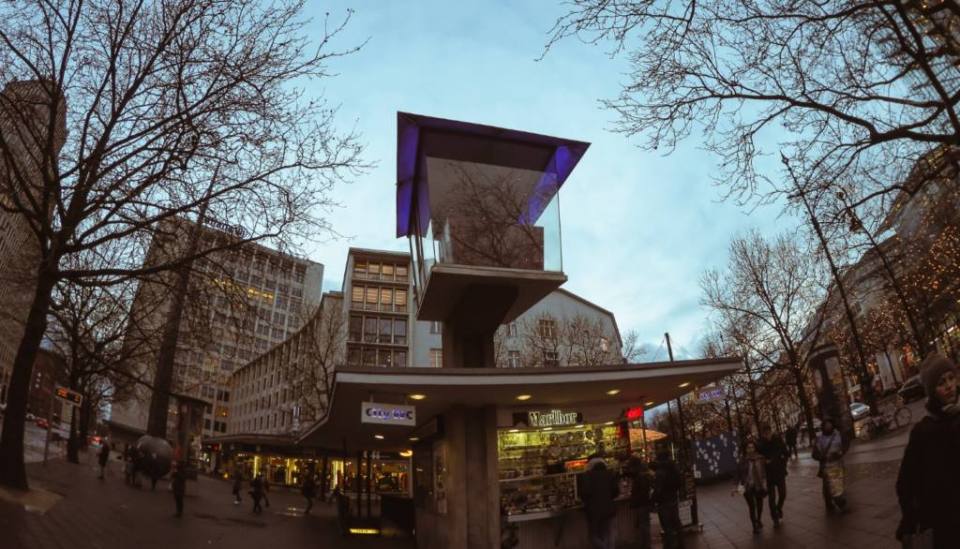
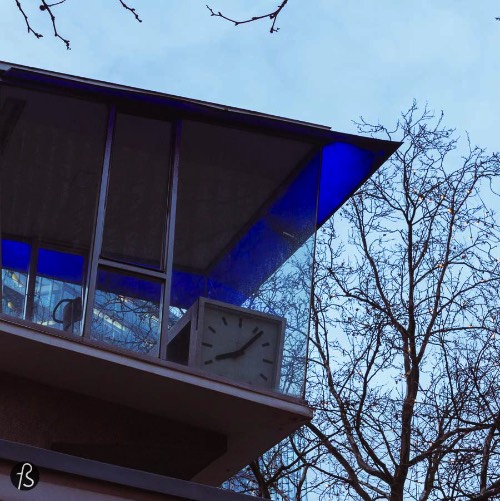
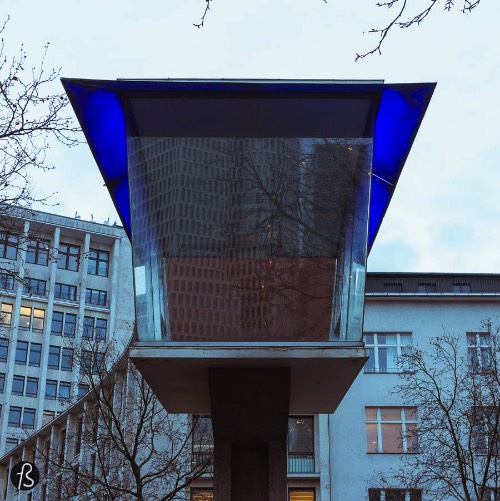
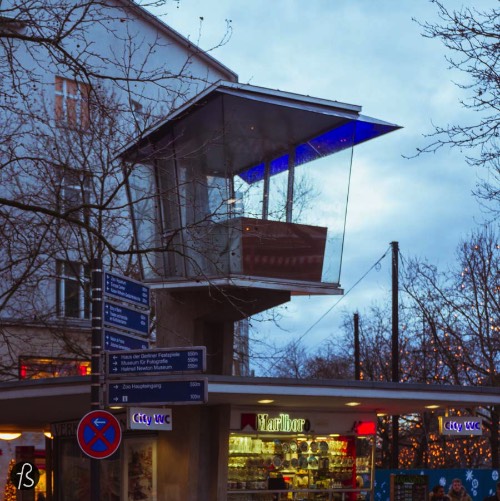
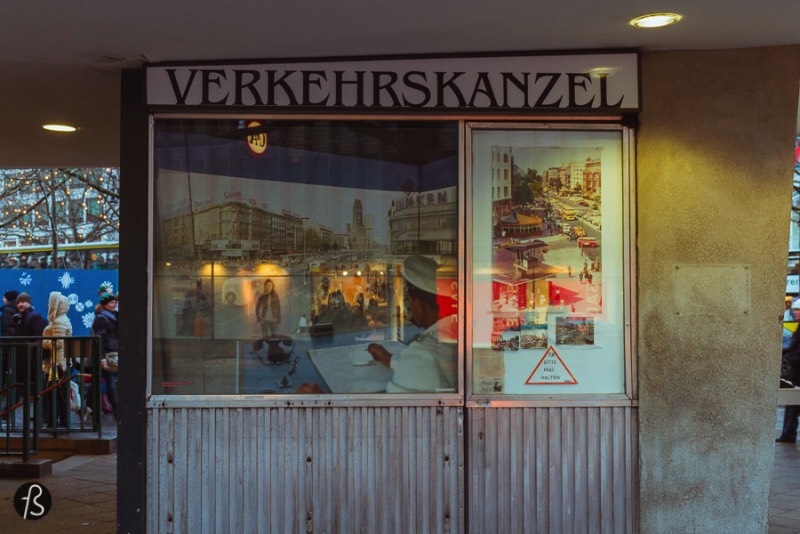
Located in Kurfüstendamm, the Verkehrskanzel is Berlin’s last surviving traffic tower.
Verkehrskanzel is the last surviving traffic pulpit in Berlin. Located at Joachimsthalerplatz, this box-like building made of glass was built over 4.5 meters in height. It stands over a pavilion with a sales kiosk, a public toilet, and one of the entries to Kurfürstendamm U-Bahn.
The construction started in 1955, but the building was obsolete in less than ten years. All this happened due to automation.
The Verkehrskanzel was built in the fifties when a car symbolized modernity and the future. Designed by the urban architect Werner Klenke and Werner Düttmann led by Bruno Grimmek.
The idea was to improve the Kurfürstendamm U-Bahn subway station with a kiosk, telephone booths, and underground toilets in one building. Something really modern for the time it was built.
The traffic pulpit was built to host a police officer paying attention to the cars and buses coming around Kurfürstendamm and turning on and off the traffic lights based on what he was seeing. This is why the Verkehrskanzel was built, and it worked really well from December 1955 to October 1962. Until the traffic lights in the area received automatic circuits and made the place useless.
I can only imagine how hot it would be to work in the Verkehrskanzel during the summer months. Right now, Joachimsthalerplatz has some trees but, all the way back in 1961, there were none.
The sun would turn this traffic tower into an oven, and I’m happy that nobody works inside it today.
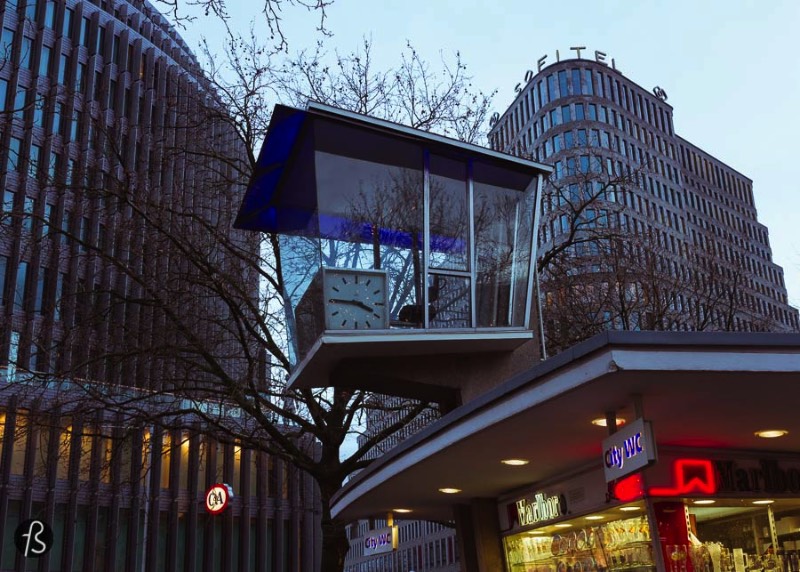
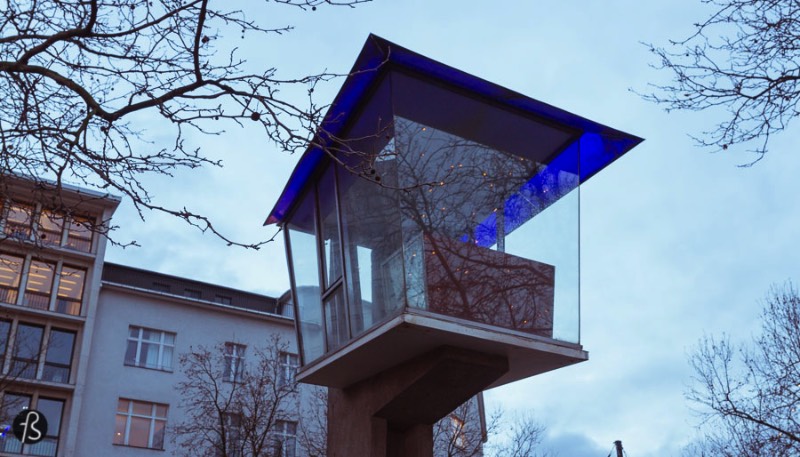
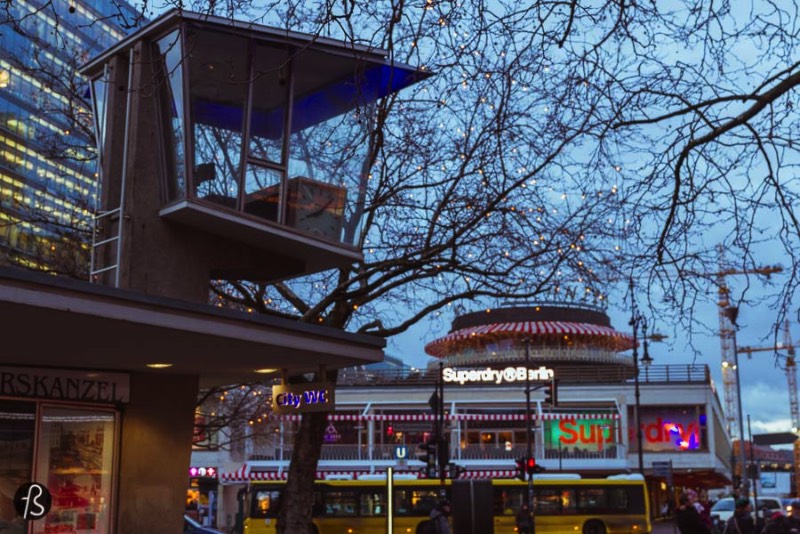
But the Verkehrskanzel is still there, more than 50 years after it became useless. In 1989, the building was put under monument protection due to its historical and artistic importance, but nobody seems to know about this place.
But Verkehrskanzel remains an essential document of how optimistic urban planning was in post-war Berlin.
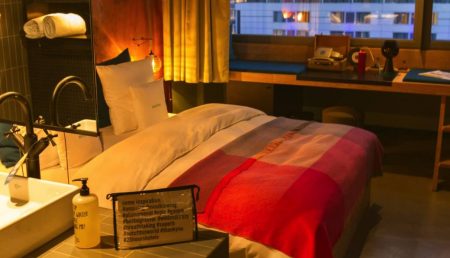
The 25 Hours Hotel is the place to stay in this part of the German capital. You can read the review we wrote about it and see that we are not lying here.
If you want a place to stay in West Berlin, follow our tip and stay at the 25 Hours Hotel. We stayed there while we explored Berlin City West, and we loved our time there.
From the city’s fantastic view to the bedrooms’ beautiful design. Don’t forget the unforgettable breakfast and the great beds!
Verkehrskanzel in Charlottenburg: Berlin’s Traffic Control Pulpit from 1950s
Kurfürstendamm 203 – Berlin